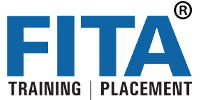
Data analytics frameworks are essential tools that enable data professionals to systematically process and analyze data. These frameworks consist of libraries, tools, and practices designed to simplify complex data tasks, from data collection and cleaning to visualization and predictive modeling. By using these frameworks, analysts can focus on deriving insights rather than getting bogged down by the intricacies of data handling. Unlock your Data Analytics potential! Embark on a data science journey with our Data Analytics Course in Chennai. Join now for hands-on learning and expert guidance at FITA Academy.
Key Components of Data Analytics Frameworks
1. Data Collection and Ingestion
The first step in any data analytics process is data collection. Data analytics frameworks provide tools for collecting data from various sources, including databases, APIs, and flat files. Frameworks like Apache Kafka and Flume are popular for real-time data ingestion, while tools like Talend and Apache Nifi facilitate batch data collection.
2. Data Cleaning and Preparation
Once data is collected, it often requires cleaning and preparation to ensure accuracy and consistency. Data cleaning involves removing duplicates, handling missing values, and correcting errors. Data preparation might include transforming data into a suitable format for analysis. Frameworks like Pandas (Python) and dplyr (R) are widely used for these tasks due to their powerful data manipulation capabilities. Start your learning journey now at the Data Analytics Courses in Bangalore.
3. Data Storage and Management
4. Data Analysis and Modeling
This is the core component where actual data analysis takes place. Frameworks provide various analytical tools and libraries to perform statistical analysis, machine learning, and predictive modeling. Python’s Scikit-Learn and TensorFlow, along with R’s caret and mlr, are popular choices for building and evaluating models.
5. Data Visualization
Visualizing data helps in understanding complex results and communicating insights effectively. Data analytics frameworks offer visualization libraries that can create a wide range of charts and plots. Tools like Matplotlib and Seaborn in Python, and ggplot2 in R, are renowned for their flexibility and ease of use.
6. Reporting and Dashboarding
The final component involves presenting the analyzed data through reports and dashboards. This allows stakeholders to easily interpret the findings. Frameworks like Tableau, Power BI, and Looker provide robust solutions for creating interactive dashboards and detailed reports.
What Are the Biggest Challenges in Data Analytics? One major hurdle is handling vast amounts of unstructured data, making it difficult to extract meaningful insights. Additionally, ensuring data accuracy, security, and compliance adds complexity. Many businesses also struggle with integrating advanced analytics tools and managing skill gaps. Overcoming these challenges requires a strategic approach, robust technology, and skilled professionals.
Popular Data Analytics Frameworks
1. Apache Hadoop
2. Apache Spark
Spark is known for its fast, in-memory data processing capabilities. It supports a wide range of analytics tasks, including batch processing, real-time processing, and machine learning. Spark’s ease of integration with Hadoop and its powerful APIs make it a preferred choice for many data professionals.
3. TensorFlow
Developed by Google, TensorFlow is an open-source framework widely used for machine learning and deep learning applications. It provides extensive libraries and tools for building and training neural networks, making it essential for advanced analytics.
4. Pandas
Pandas is a versatile data manipulation and analysis library for Python. It simplifies data cleaning and preparation with its intuitive DataFrame structure, which allows for efficient handling of structured data. Learn all the Data Analytics techniques and become a data Analyst. Enroll in our Data Analytics Courses In Coimbatore.
Read more: What are the latest trends and technologies shaping digital marketing?
Benefits of Using Data Analytics Frameworks
1. Efficiency and Speed
Frameworks streamline data processing tasks, enabling faster and more efficient analysis. This speed is crucial in today’s fast-paced business environment where timely insights can make a significant difference.
2. Scalability
Many frameworks are designed to handle large-scale data, making it easier to scale operations as data volumes grow. This scalability ensures that organizations can continue to leverage data analytics without performance bottlenecks.
3. Reusability
Frameworks provide reusable components and standardized practices, reducing the need to reinvent the wheel for each new project. This reusability saves time and ensures consistency across different analyses.
How Does Data Visualization Enhance Analytics? Data visualization transforms raw data into clear, actionable insights through charts, graphs, and interactive dashboards. It helps identify patterns, trends, and correlations, making complex data more accessible. By enhancing decision-making and improving data storytelling, visualization drives better business strategies and analytics efficiency.
4. Collaboration
By standardizing tools and practices, data analytics frameworks facilitate collaboration among team members. This standardization helps in maintaining a coherent workflow and improves overall productivity.
Data analytics frameworks are indispensable for efficiently managing and analyzing data in today’s complex data landscape. They provide the necessary tools and structure to streamline data workflows, from collection to visualization. By leveraging these frameworks, organizations can gain deeper insights, make informed decisions, and stay competitive in an increasingly data-driven world. Whether you’re handling big data with Hadoop or building machine learning models with TensorFlow, understanding and utilizing the right data analytics framework is key to unlocking the full potential of your data. Explore the top-notch Advanced Training Institute in Chennai. Unlock coding excellence with expert guidance and hands-on learning experiences.
Read more: Android Interview Questions and Answers
